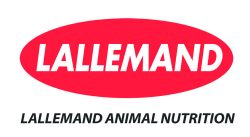This item has been supplied by a forage marketer and has not been edited, verified or endorsed by Hay & Forage Grower.
“Clostridia occur naturally in soils, and they get into field crops naturally at harvest,” says Bob Charley, Ph.D., Forage Products Manager, Lallemand Animal Nutrition. “If clostridia get going, they use up sugars and lactic acid and convert them into butyric acid, which causes some serious feeding issues.”
As anaerobic microbes, clostridia will grow even in well-packed silage if the pH is above 5.0. However, clostridia can also occur in aerobically unstable silages, as growth of the aerobic spoilage organisms creates anaerobic zones.
Spoiled silage with an elevated pH can allow other microbes like E. coli O157:H7 to grow. E. coli O157:H7 is a major cause of foodborne disease. Reducing its numbers in cattle rations can help reduce the risk of foodborne illness.
“It’s good to reduce the growth of undesirable bacteria and other microbes for a number of reasons,” Dr. Charley says. “First, cattle don’t want to eat spoiled silage. It is less palatable, and even a small amount of spoiled silage can reduce dry matter intake.1 Reducing spoilage can positively benefit the producer’s bottom line while contributing to food safety.”
One key to creating stable silage is to ensure a rapid lactic acid fermentation. This provides a more efficient fermentation, gets the pH down below 5.0 quickly and helps prevent bad (e.g. clostridial, enterobacterial) fermentations, Dr. Charley says.
A rapid, efficient fermentation doesn’t give clostridia the opportunity to grow, and studies show E. coli O157:H7 was eliminated from ensiled, contaminated wheat and corn forage when the pH decreased below 5.0.2
In a study, E. coli O157:H7 was not detected in silages when the pH decreased below 4 within three days. Not only was E. coli controlled, but applying inoculants containing Lactobacillus buchneri 40788 resulted in greater aerobic stability compared with the control. Another study showed that silage produced using the high dose L. buchneri 40788 prevented growth of E.coli in corn silage that was challenged after opening, while untreated silage and silage made with an inoculant containing L. plantarum did not.3
The high dose rate Lactobacillus buchneri 40788 has even been reviewed by the FDA and allowed to claim efficacy in preventing the growth of yeasts and molds in silages and HMC.
“A rapid pH drop sets the stage for more stable, profitable and potentially safer feedstuffs for our cattle herds,” Dr. Charley says. “We can support those goals by choosing an inoculant that helps drive a fast, efficient fermentation at the start and keeps the feed stable through feeding.”

A rapid pH drop is the first requirement to produce quality silage. When pH doesn’t drop quickly, it allows other microbes like clostridia and E. coli to grow.
“Clostridia occur naturally in soils, and they get into field crops naturally at harvest,” says Bob Charley, Ph.D., Forage Products Manager, Lallemand Animal Nutrition. “If clostridia get going, they use up sugars and lactic acid and convert them into butyric acid, which causes some serious feeding issues.”
As anaerobic microbes, clostridia will grow even in well-packed silage if the pH is above 5.0. However, clostridia can also occur in aerobically unstable silages, as growth of the aerobic spoilage organisms creates anaerobic zones.
Spoiled silage with an elevated pH can allow other microbes like E. coli O157:H7 to grow. E. coli O157:H7 is a major cause of foodborne disease. Reducing its numbers in cattle rations can help reduce the risk of foodborne illness.
“It’s good to reduce the growth of undesirable bacteria and other microbes for a number of reasons,” Dr. Charley says. “First, cattle don’t want to eat spoiled silage. It is less palatable, and even a small amount of spoiled silage can reduce dry matter intake.1 Reducing spoilage can positively benefit the producer’s bottom line while contributing to food safety.”
One key to creating stable silage is to ensure a rapid lactic acid fermentation. This provides a more efficient fermentation, gets the pH down below 5.0 quickly and helps prevent bad (e.g. clostridial, enterobacterial) fermentations, Dr. Charley says.
A rapid, efficient fermentation doesn’t give clostridia the opportunity to grow, and studies show E. coli O157:H7 was eliminated from ensiled, contaminated wheat and corn forage when the pH decreased below 5.0.2
In a study, E. coli O157:H7 was not detected in silages when the pH decreased below 4 within three days. Not only was E. coli controlled, but applying inoculants containing Lactobacillus buchneri 40788 resulted in greater aerobic stability compared with the control. Another study showed that silage produced using the high dose L. buchneri 40788 prevented growth of E.coli in corn silage that was challenged after opening, while untreated silage and silage made with an inoculant containing L. plantarum did not.3
The high dose rate Lactobacillus buchneri 40788 has even been reviewed by the FDA and allowed to claim efficacy in preventing the growth of yeasts and molds in silages and HMC.
“A rapid pH drop sets the stage for more stable, profitable and potentially safer feedstuffs for our cattle herds,” Dr. Charley says. “We can support those goals by choosing an inoculant that helps drive a fast, efficient fermentation at the start and keeps the feed stable through feeding.”

